

Metacognition: The Gift That Keeps Giving. Editor's note: This post is co-authored by Marcus Conyers who, with Donna Wilson, is co-developer of the M.S. and Ed.S.
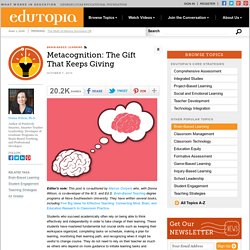
Brain-Based Teaching degree programs at Nova Southeastern University. They have written several books, including Five Big Ideas for Effective Teaching: Connecting Mind, Brain, and Education Research to Classroom Practice. Students who succeed academically often rely on being able to think effectively and independently in order to take charge of their learning. These students have mastered fundamental but crucial skills such as keeping their workspace organized, completing tasks on schedule, making a plan for learning, monitoring their learning path, and recognizing when it might be useful to change course. They do not need to rely on their teacher as much as others who depend on more guidance to initiate learning tasks and monitor their progress. Metacognition in the Brain. Basic Questions of Metacognition. A metathinking manifesto. The significant problems we face today cannot be solved at the same level of thinking we were at when we created them. – Einstein For several years now, I’ve been studying the intersection of technology, culture and communication, the impacts of social media, the relationship between creativity, innovation and design, and the potential of various futures.
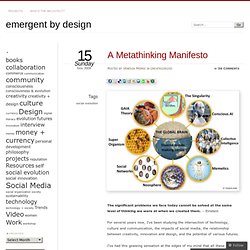
I’ve had this gnawing sensation at the edges of my mind that all these areas were held together by a common thread, but I couldn’t put my finger on the connection. Tools for metacognition. Metacognition is an important part of intentional learning, since it involves actively thinking about what you know, what you don’t know, and how you can get better at knowing and applying what you know.
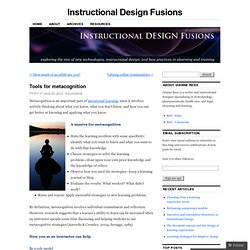
A mantra for metacognition State the learning problem with some specificity: identify what you want to know and what you want to do with that knowledgeChoose strategies to solve the learning problem—draw upon your own prior knowledge and the knowledge of othersObserve how you used the strategies—keep a learning journal or blogEvaluate the results: What worked? What didn’t work? The work of Chris Argyris. Contents: introduction · life · theories of action: theory in use and espoused theory · single-loop and double-loop learning · model I and model II · organizational learning · conclusion · further reading and references · links · cite Chris Argyris has made a significant contribution to the development of our appreciation of organizational learning, and, almost in passing, deepened our understanding of experiential learning.
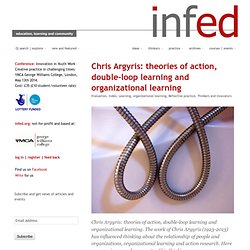
On this page we examine the significance of the models he developed with Donald Schön of single-loop and double-loop learning, and how these translate into contrasting models of organizational learning systems. Life. The Ladder of Inference. Climbing the Ladder of Inference. It happened again this week.
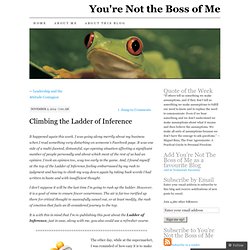
I was going along merrily about my business when I read something very disturbing on someone’s Facebook page. It was one side of a multi-faceted, distasteful, eye-opening situation affecting a significant number of people personally and about which most of the rest of us had an opinion. I took an opinion too, way too early in the game. And, I found myself at the top of the Ladder of Inference feeling embarrassed by my rush to judgment and having to climb my way down again by taking back words I had written in haste and with insufficient thought.
I don’t suppose it will be the last time I’m going to rush up the ladder. It is with this in mind that I’m re-publishing this post about the Ladder of Inference, just in case, along with me, you also could use a refresher course. What Does It Mean? What does it mean?
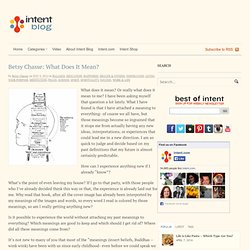
Or really what does it mean to me? I have been asking myself that question a lot lately. What I have found is that I have attached a meaning to everything- of course we all have, but those meanings become so ingrained that it stops me from actually having any new ideas, interpretations, or experiences that could lead me in a new direction. I am so quick to judge and decide based on my past definitions that my future is almost certainly predictable. How can I experience anything new if I already “know”? The Ladder of Inference - Problem-Solving Training from MindTools. Avoiding "Jumping to Conclusions" Don't just "dive in" and make a decision right away. © iStockphoto/abbesses Have you ever been accused of "putting 2 and 2 together and making 5", meaning that the other person thinks you have jumped to the wrong conclusion?
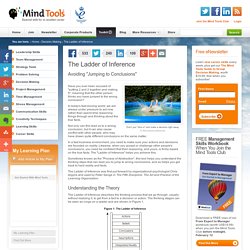
In today's fast-moving world, we are always under pressure to act now, rather than spend time reasoning things through and thinking about the true facts. Not only can this lead us to a wrong conclusion, but it can also cause conflict with other people, who may have drawn quite different conclusions on the same matter. Ladder of Inference. Create your ladder activity. An excellent way to better understand the Ladder of Inference is to work in a small group and talk about a pattern of behavior that everyone can relate to.

Some examples (in addition to the parking lot example) include: someone cutting in front of you in a line at the store; a friend or family member who is always annoyingly late; or someone who leaves you disappointed because he/she breaks more promises than he/she keeps. As you each share your experience, focus on what assumptions are at play, the conclusions you are each drawing from those assumptions, and what emotions you feel as a result. Distinguishing Between Inferences and Assumptions. To be skilled in critical thinking is to be able to take one’s thinking apart systematically, to analyze each part, assess it for quality and then improve it.
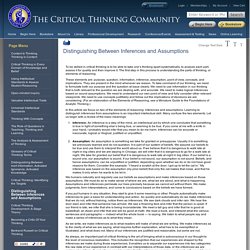
The first step in this process is understanding the parts of thinking, or elements of reasoning. These elements are: purpose, question, information, inference, assumption, point of view, concepts, and implications. They are present in the mind whenever we reason. To take command of our thinking, we need to formulate both our purpose and the question at issue clearly. We need to use information in our thinking that is both relevant to the question we are dealing with, and accurate. Cognitive Structures What they are and why they matter. Heuristic. A heuristic technique (/hjʉˈrɪstɨk/; Greek: "Εὑρίσκω", "find" or "discover"), sometimes called simply a heuristic, is any approach to problem solving, learning, or discovery that employs a practical methodology not guaranteed to be optimal or perfect, but sufficient for the immediate goals.
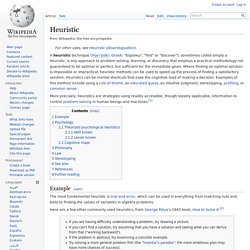
Where finding an optimal solution is impossible or impractical, heuristic methods can be used to speed up the process of finding a satisfactory solution. Heuristics can be mental shortcuts that ease the cognitive load of making a decision. Mental Heuristics Page. A heuristic is a "rule-of-thumb", advice that helps an AI program or human think and act more efficiently by directing thinking in an useful direction. Some of these heuristics are age-old wisdom, bordering on cliche, but most are actually helpful. If you want something done, do it yourself Comment: Obviously true, and doing it is usually very good for your self esteem.
Assumption surfacing and testing. It is all too easy to treat the routines or rules which we use in certain types of situation as inevitable and ordained. The aim of this tool is to bring to the surface and make more visible the assumptions underlying our choices and actions. Make a list of some of the ‘rules’ by which you make decisions: for example, who you consult, where you would look for best practice, how you go about getting approval, etc.
Ask yourself why you feel it is the best choice and on what critical assumptions your customary behaviour depends. List the assumptions, and beside each formulate a counter-assumption – not necessarily its negation, but rather the opposite pole of the construct (issue) it represents. Write these down alongside the corresponding assumptions. Now consider what would happen if the counter-assumption was in fact the case.
Unlearning / Mental Revision. Schema (psychology) In psychology and cognitive science, a schema (plural schemata or schemas) describes an organized pattern of thought or behavior that organizes categories of information and the relationships among them.[1] It can also be described as a mental structure of preconceived ideas, a framework representing some aspect of the world, or a system of organizing and perceiving new information.[2] Schemata influence attention and the absorption of new knowledge: people are more likely to notice things that fit into their schema, while re-interpreting contradictions to the schema as exceptions or distorting them to fit.
Schemata have a tendency to remain unchanged, even in the face of contradictory information. Schemata can help in understanding the world and the rapidly changing environment.[3] People can organize new perceptions into schemata quickly as most situations do not require complex thought when using schema, since automatic thought is all that is required.[3] Main article: Schema Therapy. Schema Theory. Schema Theory (learning theory, psychology, cognitive science) According to schema theory, people make sense of new experiences and the world by activating the mental representations or schemata stored in their memory. New experiences and information are interpreted according to how it fits into their schemata. Information that does not fit may be misunderstood or miscomprehended. Key Concepts Definition. Metacognition Reflection Framework. Model I & Model II Governing Variables. Model I & Model II.
Theories in Practice: Model I & Model II.